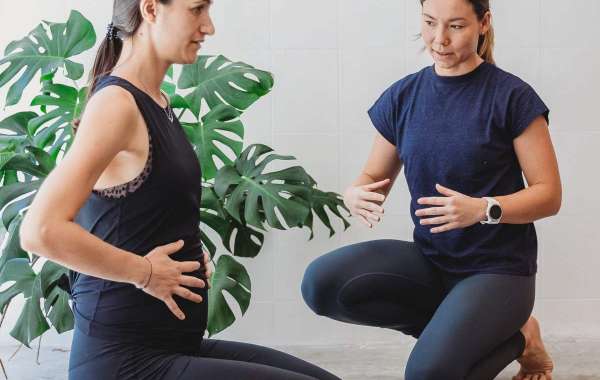Pregnancy is a time of immense change physically, mentally, and emotionally. Many expecting mothers turn to yoga to stay active, reduce stress, and connect with their bodies. While yoga is known for its calming and strengthening effects, certain poses, such as inversions, can cause concern, especially for pregnant women.
Inversions, which involve positioning the heart above the head, offer numerous benefits for flexibility, balance, and blood circulation.
What Are Inversions?
In yoga, inversions refer to any pose where the heart is above the head. Some common examples include Downward Dog, Legs-Up-the-Wall, Shoulder Stand, and Headstand. These poses can range from gentle to advanced and have varying levels of intensity. During pregnancy, the safety of practicing inversions largely depends on your experience with yoga and the specific stage of pregnancy.
Is It Safe to Practice Inversions During Pregnancy?
The big question many pregnant women ask is whether inversions are safe during pregnancy. According to prenatal yoga instructors, the answer depends on a few key factors: your familiarity with the pose, your physical condition, and how your body feels.
If you’re new to yoga:
Inversions should generally be avoided unless they are modified to be gentle and supported. Starting a yoga practice during pregnancy can be beneficial, but more advanced poses like headstands may not be suitable for beginners.
If you’ve practiced inversions pre-pregnancy:
Women who are experienced with inversions and feel confident can continue to practice, but should do so with caution and modifications. Yoga instructor Emily Clarke, who specializes in prenatal yoga, advises, If inversions have been part of your regular practice, you can continue them as long as you feel stable and supported, but listen to your body.
Benefits of Gentle Inversions in Pregnancy
There are some potential benefits to incorporating inversions during pregnancy, especially in the earlier trimesters:
- Improved Circulation
Inversions can help boost circulation, particularly to the lower body, which can alleviate swelling and reduce pressure on the legs.
- Relief from Back Pain
Gentle inversions, such as Downward Dog, can provide relief from lower back discomfort by stretching and decompressing the spine.
- Enhanced Relaxation
Certain inversions, like Legs-Up-the-Wall, are deeply calming and can help relieve stress, reduce anxiety, and promote relaxation.
- Support for Baby’s positioning
Some experts suggest that gentle inversions may encourage optimal fetal positioning by creating space for the baby to move.
Expert Tips for Practicing Inversions during Pregnancy
If you’re considering practicing inversions while pregnant, here are some expert-backed tips to help ensure a safe and comfortable experience:
- Modify and Use Support
During pregnancy, balance and stability may be affected. Instructors recommend modifying poses and using props like walls, bolsters, or chairs to prevent strain. For instance, a supported Shoulder Stand or using a wall for balance in Downward Dog can make inversions more accessible.
- Avoid Strenuous Inversions
While it may be tempting to continue advanced poses like handstands, it’s best to avoid them in pregnancy due to the increased risk of falling. Gentle inversions, like Legs-Up-the-Wall or supported Bridge Pose, are safer and still offer the benefits of reversing blood flow.
- Pay Attention to Your Body
The most important advice yoga instructors give is to listen to your body. Pregnancy is a time of change, and what worked for you pre-pregnancy may no longer feel comfortable. If you feel dizzy, lightheaded, or off-balance, stop the inversion and focus on more grounded poses.
- Practice in the First and Second Trimesters
According to most yoga instructors, inversions are safer in the first two trimesters, when the belly is smaller, and balance is easier to maintain. By the third trimester, many women choose to forgo inversions due to increased discomfort and the risk of falling.
Safe Alternatives to Inversions
If inversions don’t feel right for you, or if your healthcare provider advises against them, there are plenty of alternatives that offer similar benefits:
- Cat-Cow Stretch: A gentle spinal movement that improves flexibility and relieves back pain.
- Bridge Pose (with support): A mild inversion that helps open the chest and hips without putting too much pressure on the abdomen.
Conclusion: Balance and Caution Are Key
Inversions can be a valuable part of a prenatal yoga practice, but they require extra care and consideration during pregnancy. Experienced yoga instructors emphasize the importance of listening to your body, modifying poses, and avoiding anything that feels uncomfortable or unsafe.
Ultimately, the goal of pregnancy yoga is to nurture both your body and your growing baby, so focus on what feels good, stay safe, and enjoy the journey.
Contact Information:
For more information, interview requests, or media inquiries, please contact:
Yogakulam Academy
Call: +91 8951744772
Email: yogakulamacademyinternational@gmail.com
Website: https://85hrprenatalpostnatalyogattc.com/














